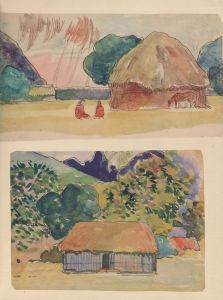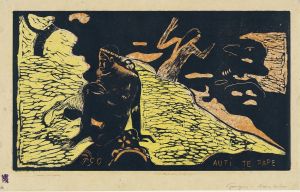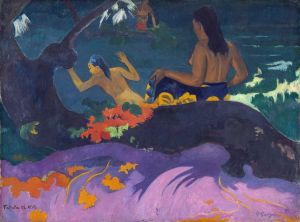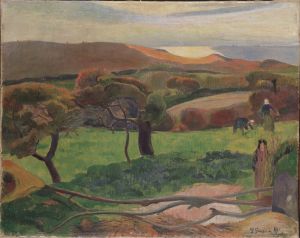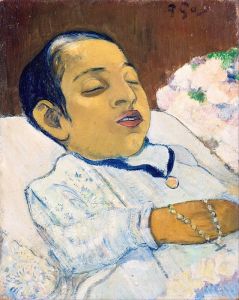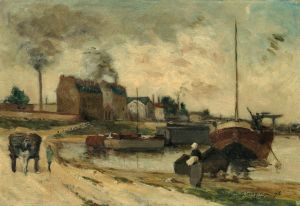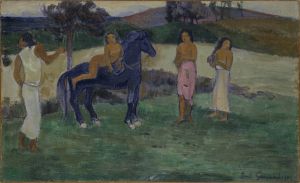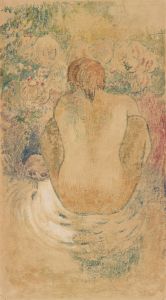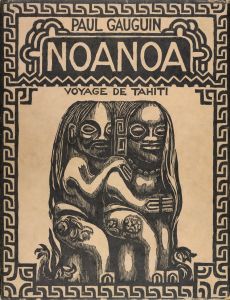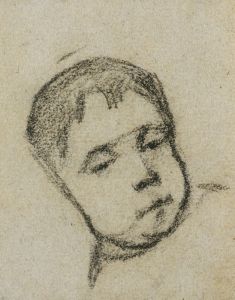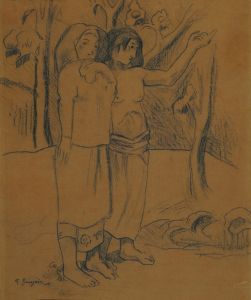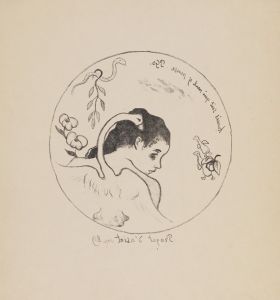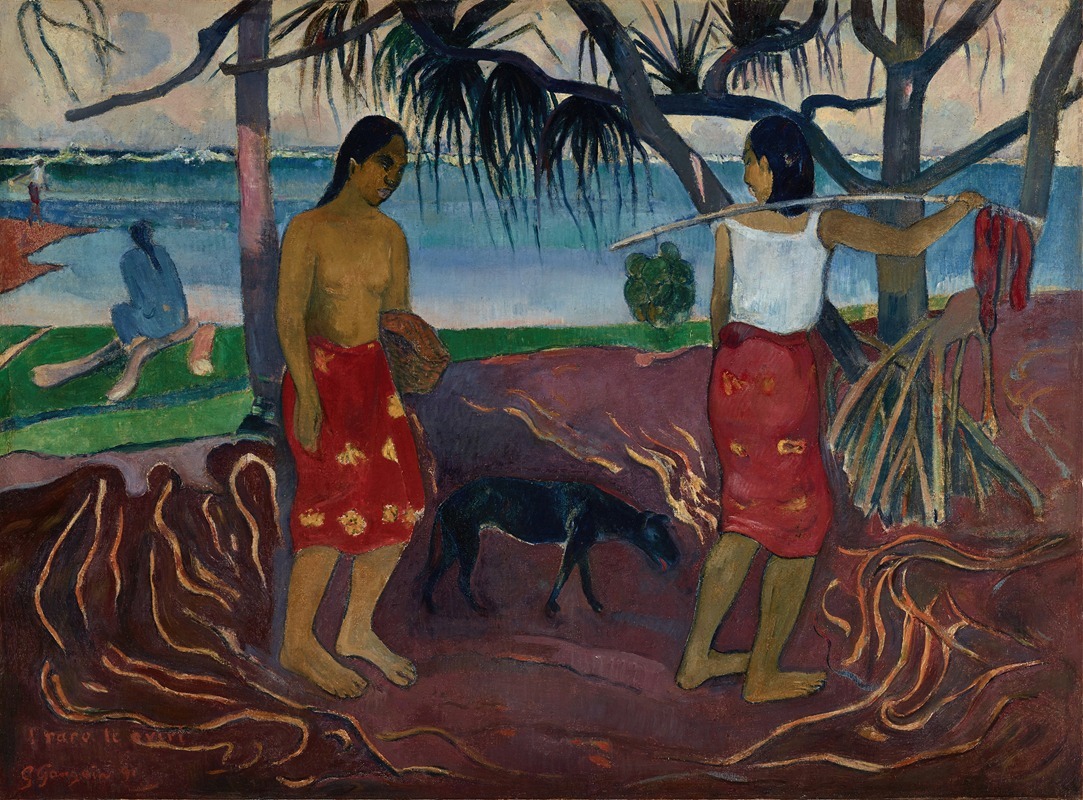
I Raro te Oviri
A hand-painted replica of Paul Gauguin’s masterpiece I Raro te Oviri, meticulously crafted by professional artists to capture the true essence of the original. Each piece is created with museum-quality canvas and rare mineral pigments, carefully painted by experienced artists with delicate brushstrokes and rich, layered colors to perfectly recreate the texture of the original artwork. Unlike machine-printed reproductions, this hand-painted version brings the painting to life, infused with the artist’s emotions and skill in every stroke. Whether for personal collection or home decoration, it instantly elevates the artistic atmosphere of any space.
"I Raro te Oviri" is a painting by the French post-impressionist artist Paul Gauguin, created in 1891 during his first visit to Tahiti. Gauguin, known for his bold use of color and synthetist style, sought to escape European civilization and find inspiration in what he perceived as the more primitive and exotic cultures of the South Pacific. This painting is one of the many works he produced during his time in Tahiti, reflecting his fascination with the island's people and landscapes.
The title "I Raro te Oviri" can be translated from Tahitian to mean "Under the Pandanus," referring to the pandanus tree, which is native to the region and often depicted in Gauguin's Tahitian works. The painting features a Tahitian woman, a common subject in Gauguin's art, portrayed in a serene and contemplative pose. The composition is characterized by Gauguin's typical use of flat, bold colors and strong outlines, which were influenced by his interest in Japanese prints and cloisonnism, a style that emphasizes bold contours and flat areas of color.
Gauguin's work in Tahiti was driven by his desire to capture what he believed to be the essence of an unspoiled and idyllic society, free from the constraints and complexities of Western life. However, his portrayal of Tahitian life was often romanticized and did not accurately reflect the realities faced by the island's inhabitants, who were experiencing significant cultural and social changes due to colonial influences.
"I Raro te Oviri" exemplifies Gauguin's approach to art, where he combined elements of symbolism and primitivism to create works that were both visually striking and thematically complex. The painting reflects his interest in exploring themes of spirituality, nature, and the human condition, often through the lens of his own interpretations and fantasies about the cultures he encountered.
Gauguin's time in Tahiti was marked by both personal and professional challenges. While he produced some of his most famous works during this period, he also faced financial difficulties and health issues. Despite these challenges, his Tahitian paintings, including "I Raro te Oviri," have had a lasting impact on the art world, influencing future generations of artists and contributing to the development of modern art.
Today, Gauguin's work is celebrated for its innovative use of color and form, as well as its exploration of complex themes. However, it is also critiqued for its portrayal of non-European cultures, which often reflects the colonial attitudes of his time. "I Raro te Oviri" remains an important piece within Gauguin's oeuvre, offering insight into his artistic vision and the cultural context in which he worked.





